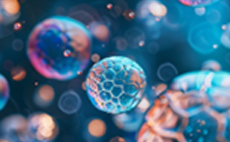 Request a FREE Sample of our FcRn Binding Kit!
Request a FREE Sample of our FcRn Binding Kit! Request a FREE Sample of our FcRn Binding Kit!
Request a FREE Sample of our FcRn Binding Kit!
 Limited Edition Golden Llama is here! Check out how you can get one.
Limited Edition Golden Llama is here! Check out how you can get one.  Limited Edition Golden Llama is here! Check out how you can get one.
Limited Edition Golden Llama is here! Check out how you can get one.
 Request a FREE sample of our GMP products!
Request a FREE sample of our GMP products!  Request a FREE sample of our GMP products!
Request a FREE sample of our GMP products!
| ID | Components | Size |
| RIPO-BWM001K-C01 | Basal medium A | 22.5ml |
| RIPO-BWM001K-C02 | Basal medium B | 22.5ml |
| RIPO-BWM001K-C03 | Basal medium MM | 90ml |
| ID | Components | Size |
| RIPO-BWM001K-1-C01 | Supplement A-1 | 2ml |
| RIPO-BWM001K-1-C02 | Supplement A-2 | 0.5ml |
| RIPO-BWM001K-1-C03 | Supplement B-1 | 2ml |
| RIPO-BWM001K-1-C04 | Supplement B-2 | 0.5ml |
| RIPO-BWM001K-1-C05 | Supplement MM-1 | 8ml |
| RIPO-BWM001K-1-C06 | Supplement MM-2 | 2ml |
The unopened Box A is stable for 12 months from the date of manufacture if stored under 2-8°C.
The unopened Box B is stable for 12 months from the date of manufacture if stored under -20°C.
The opened kit should be stored according to components table.

Protocol Diagram of cerebral organoid differentiation.

Left: Early-stage cerebral organoid show rosette-like structures (neural stem cells), which become smaller as organoids develop.
Right: Day 109 cerebral organoids show uniform morphology and show no dead core inside.

Presence of NESTIN positive cells and TUJ1 positive cells in early stage (day 36) cerebral organoid.
TUJ1: early-stage neuronal marker.
NESTIN : a cytoskeletal intermediate filament characterized in neural stem cells.

Presence of TH and MAP2 positive neurons in day 92 cerebral organoid.
TH: used as cell marker of dopaminergic neurons.
MAP2: mature neuron cell marker.

Left: Presence of GFAP positive cells at day 109 cultured cerebral organoid.
Right: Presence of OLIG2 positive cells at day 119 cultured cerebral organoid.
GFAP: marker for astrocyte.
OLIG2: marker for oligodendrocyte.

Presence of TH and IBA1 positive cell in day 147 cultured cerebral organoid.
IBA1: cell marker for microglia.

A: patch-clamp recording of excitatory neurons sectioned from cerebral organoids at day 102. Excitatory neuron showed stable response to step injection currents.
B: Recording of cerebral organoid (day 60) using silicon probe. Neurons showed spontaneous activities and different waveforms.
C: MEA recording indicated spontaneous bursting activities for cerebral organoid (day 86).

Using cerebral organoids for modelling Parkinson's Disease. Cerebral organoids are treated with Human Alpha-Synuclein Pre-formed Fibrils Protein. Dopaminergic neurons and MAP2 positive neurons are damaged with both 0.1 μM and 1 μM Alpha-Synuclein Pre-formed Fibrils.

AAVs selection using cerebral organoids: Different capsid of AAVs were incubated with cerebral organoids. As the results, different affinities of each AAV to the cerebral organoid were observed.

Explore our catalog of therapeutic antibody solutions to find the right products for you! We are dedicated to delivering solutions designed to help you drive innovation and push the boundaries of what therapeutic antibodies can be.

We offer a wide range of cell and gene therapy solutions starting from discovery to the clinic. Explore our wide range of proteins, antibodies, kits, and other assays to accelerate the development of your cell and gene therapy.

Organoid Toolbox is a collection of organoid solutions including ready-to-use organoids, organoid differentiation kits, and a variety of services to accelerate the progress of your drug development project.

ACROBiosystems developed a series of GMP grade cytokines under the GMP grade quality management system. Those products are all suitable for T/NK cell generation, activation, and proliferation in cell therapy research.

50+ targets designed for CAR detection, including PE/FITC/biotin labeled proteins. The key reagents for CD19 and BCMA were FDA DMF filed which can support your IND, NDA and BLA process.

GMP grade cytokines, reagents for cell activation, gene edition, DNA/RNA removal, etc. Particularly focus on product design, quality control and solution-based support to link each phase of your cell and gene therapy journey.

Full length multi-pass TPs with stabilized structure and high bioactivity for immunization, antibody screening, cell based assay and CAR detection, including hot CD20, Claudin 18.2, CD133, GPRC5D,CCR8, CCR5, etc.

A series of immune checkpoints including classic co-inhibitory and co-stimulatory receptors. The comprehensive catalog contains 100+ targets with various species and tags, and the high-quality proteins are in good batch-to-batch consistency.

To meet the needs of ADCs development, ACROBiosystems can provide: A variety of high-quality target proteins; MMPs/Cathepsin/uPA for cleavable linker; Anti-payload antibodies & anti-idiotypic antibodies for immunogenicity and PK analysis; SPR/BLI analytical and ADA development service.

Comprehensive collection of Fc receptor proteins, including their common variants, which can help expedite your antibody development.

Comprehensive cytokine targets including interleukins, growth factors, chemokines, TNFs, etc. are expressed by HEK293 to ensure their natural structure. Their high purity is verified by SDS-PAGE/HPLC/SEC-MALS and high bioactivity is verified by ELISA/SPR/BLI.

Aneuro provides innovative solutions for neuroscience research. Recombinant proteins, neural factors, pre-formed fibrils, electrophysiological electrodes, as well as Organoid Toolbox all in Aneuro aiming to advance neuroscience research, develop therapeutic interventions, and improve diagnostic methods for neurological diseases.
This web search service is supported by Google Inc.
